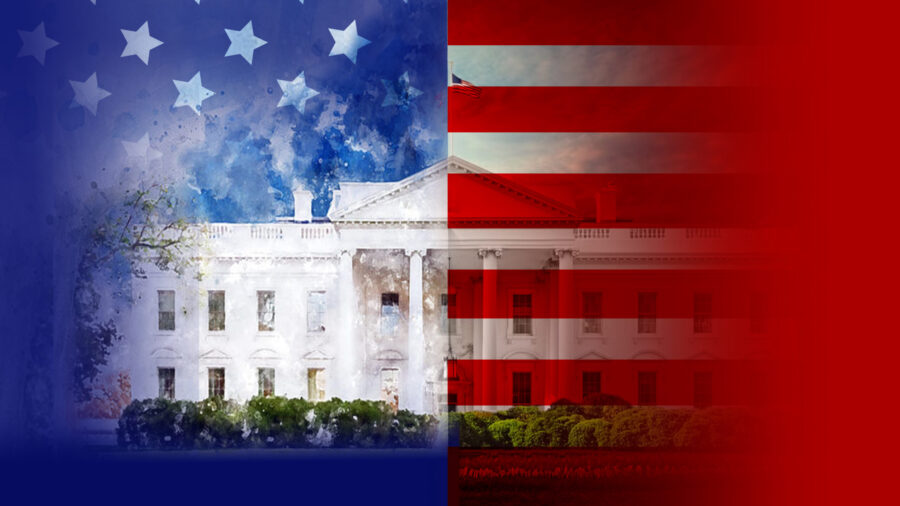In a move that has sent shockwaves through the cultural and academic sectors, the Trump administration has intensified its campaign against Diversity, Equity, and Inclusion (DEI) programs. This crackdown has led to significant repercussions, including the cancellation of major art exhibitions and the withdrawal of corporate sponsorships for LGBTQ-positive events.
Cancellations at the Art Museum of the Americas
The Art Museum of the Americas in Washington, DC, recently canceled two highly anticipated exhibitions. These cancellations were a direct response to executive orders issued by President Donald Trump that target programs promoting diversity, equity, and inclusion. One exhibition, titled "Before the Americas" and curated by Cheryl D. Edwards, was designed to explore the profound impact of the transatlantic slave trade and the African diaspora on modern and contemporary art.
The Disappointment of Artists and Curators
The show was set to feature works by esteemed artists such as Wifredo Lam, Elizabeth Catlett, Martin Puryear, and Amy Sherald. Edwards expressed deep disappointment, noting that this would have been the museum's first major exhibition showcasing a significant number of Afro Latino, Caribbean, and African American artists. The cancellation of this exhibition is seen by many as a severe blow to the representation of historically marginalized voices in the art world.
Nature’s Wild With Andil Gosine: A Cultural Loss
The second exhibition, "Nature’s Wild With Andil Gosine," was based on a publication by the Canadian artist and professor Andil Gosine. This show was intended to examine the complex intersections between environmental issues, sexuality, and social justice. It aimed to challenge colonial legal frameworks and highlight queer narratives within a Caribbean context. Gosine lamented the decision, explaining that the artworks were specifically created for the Art Museum of the Americas and that their cancellation represents a significant cultural loss.
A Wider Trend in the Art World
Both exhibitions were emblematic of an emerging trend in the art world, where creative expression is increasingly intertwined with social and political activism. The cancellations of these exhibitions are not isolated incidents but part of a broader policy shift. The Trump administration has pursued an aggressive strategy to defund initiatives that promote diversity, equity, and inclusion. In an executive order issued earlier this year, federal funding for DEI programs was drastically reduced.
Pressure on Cultural Institutions
Institutions that rely on government support have found themselves forced to reexamine their curatorial policies and programming decisions. For many cultural institutions, the cancellation of these exhibitions reflects a tension between maintaining financial viability and upholding a commitment to fostering a diverse and inclusive cultural dialogue.
Impact Across the Art World
The impact of these decisions extends far beyond the walls of the Art Museum of the Americas. Major art institutions and galleries across the country are now facing increased pressure to reconsider their own DEI initiatives. Many in the art community view these cancellations as an affront to artistic freedom and an alarming setback in the ongoing struggle for social justice. Critics argue that art plays a crucial role in challenging societal norms and giving voice to those who have historically been marginalized.
Corporate Sponsorships Under Scrutiny
Corporate sponsorships have also come under scrutiny as companies reassess their public commitments to diversity and inclusion. For instance, Pride Toronto, one of North America’s largest LGBTQ-positive festivals, recently lost the support of three major corporate sponsors. These companies, which operate in both the United States and Canada, withdrew their backing over concerns about potential backlash from the administration. The resulting funding crisis has raised serious questions about the future of corporate support for cultural initiatives that celebrate diversity and foster inclusion.
DEI Initiatives in the Educational Sector
The educational sector, too, has been caught in the crossfire. In a controversial memorandum issued in mid-February, the Trump administration mandated that schools and universities dismantle their DEI programs within a very short timeframe or risk losing federal funding. This directive has sown confusion and concern among educational institutions nationwide. Some universities have begun reevaluating or even shuttering their diversity programs in an effort to comply with the new rules, while others in states such as Washington, California, and New York continue to defend the importance of these initiatives.
Legal Challenges and Judicial Actions
Legal challenges have also emerged in response to these aggressive policy changes. Federal judges have intervened with temporary injunctions to block parts of the administration’s executive orders, particularly those aimed at undermining DEI programs and reducing funding for the National Institutes of Health. These judicial actions underscore the contentious nature of the administration’s approach and highlight the ongoing struggle over the future of DEI initiatives in the United States.
Broader Implications for Cultural Policy
The broader implications of these developments are profound. The aggressive stance adopted by the Trump administration signals a fundamental shift in the federal government’s approach to cultural policy. By systematically dismantling programs that promote diversity, equity, and inclusion, the administration is reshaping the landscape of American cultural and educational institutions. This shift raises urgent questions about the future of artistic freedom, the representation of marginalized voices, and the role of art as a catalyst for social change.
The Ongoing Struggle for Diversity and Inclusion
As the nation grapples with these transformative changes, artists, educators, and community leaders continue to advocate for the preservation and advancement of DEI initiatives. They stress that these programs are essential not only for reflecting the nation’s multifaceted identity but also for promoting social cohesion and inspiring critical dialogue.
Resilience in the Cultural Community
In the midst of this turbulent climate, the cultural community remains resilient. While some institutions may choose to adapt their programming to align with the new funding realities, many continue to press for the importance of inclusivity and diversity in all aspects of cultural life. The cancellations and funding cuts serve as stark reminders of the fragility of artistic expression in the face of political pressure. They also underscore the vital role that art plays in challenging the status quo and fostering a more inclusive society. As debates rage on in boardrooms, courtrooms, and classrooms, one thing is clear: the struggle for diversity and inclusion in the arts is far from over.
Hashtags
#ArtNews #CulturalPolicy #DEI #DiversityInArt #ArtExhibitions #ArtInstitution #TheArtTimes #InclusionMatters #ArtAndSociety #CulturalDialogue









